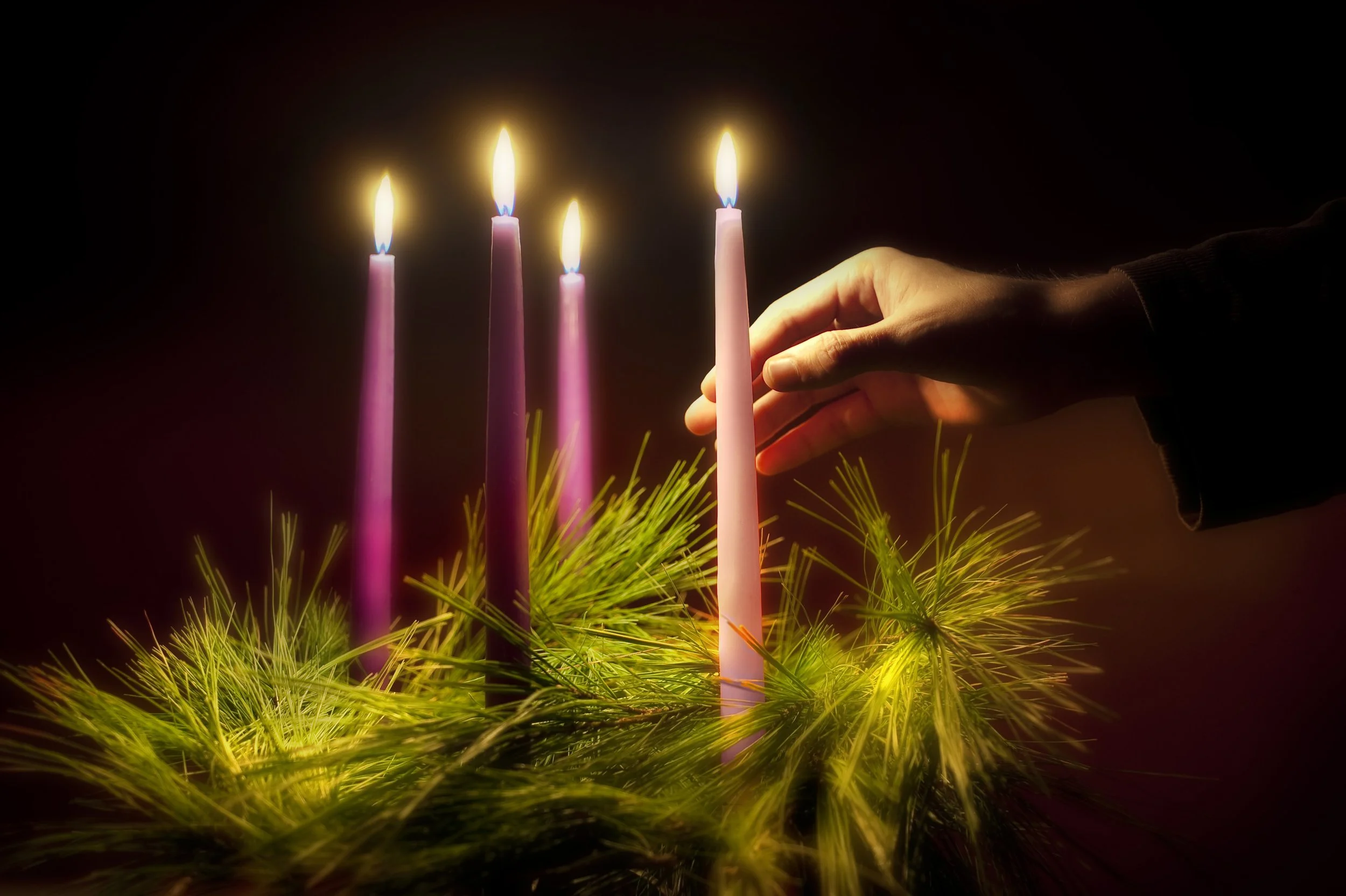"O" Antiphons
In our last Liturgy blog post, we briefly referenced a collection of chanted prayers known as the "O" Antiphons - due to each of them beginning with an exclamatory "Oh ___". These antiphons have a long and rich history in the church, and have even found their way into our more contemporary Advent music.
Among the earliest recorded prayers of the church, they date back to at least the 8th century AD, and possibly earlier, with Boethius describing them in the 6th cent. There are seven "O" antiphons total, one sung each day during Vespers (6pm prayer in the Liturgy of the Hours), starting on 12/17 and ending on 12/24, Christmas Eve. Thus, these prayers are meant to express an eager anticipation and longing for the Messiah to come and redeem His people. They are rich with imagery drawn from the book of Isaiah, often referred to as "the 5th Gospel" by early church fathers due to how strongly passages describe Christ and His ministry.
While much more could be said about the theological depth and meaning these antiphons contain, a great example of their Messianic hopes lies within a hidden intentional message in their ordering. Below are the first words of each "O" antiphon:
o 17 December: O Sapientia (O Wisdom)
o 18 December: O Adonai (O Lord)
o 19 December: O Radix Jesse (O Root of Jesse)
o 20 December: O Clavis David (O Key of David)
o 21 December: O Oriens (O Dayspring)
o 22 December: O Rex Gentium (O King of the Nations)
o 23 December: O Emmanuel (O With Us is God)
Now, if you lay out the first letter of each word in reverse order, you create the phrase "Ero Cras" - which is Latin for "tomorrow, He comes." This is more than just a hidden message from clever monks; it is an additional layer of prayer and Advent meditation. Finally, if aspects of these antiphons are familiar, they should be, because they form the basis for our current Advent hymn "O Come, O Come, Emmanuel." And since not everyone can make the time to pray Vespers daily from 12/17-24, for the last few years, OLMC has always ended its Advent Masses with this hymn - working through all 7 verses over the course of Advent so that we all can listen to the prophecies of Isaiah, and like the Israelites of his day, eagerly await the coming of the Messiah in our hearts.
Gaudete Sunday
On the 3rd Sunday of Advent, many of you notice the priests' vestments change from violet/purple to rose/pink. This signifies a special Sunday in Advent known as Gaudete Sunday. The Latin word "Gaudete" translates to the command "Rejoice!" and is the first word of the entrance antiphon for that day: Gaudete in Domino semper - "Rejoice in the Lord always!" The remainder of the Gaudete antiphon is taken from Philippians 4 and Psalm 84, and is as follows:
"Let your modesty be known to all men: for the Lord is nigh. Be nothing solicitous: but in every prayer let your petitions be made known to God. O Lord thou hast blessed thy land: thou hast turned away the captivity of Jacob."
From this entrance antiphon, and the readings of the Mass, the clear message of this particular Advent Sunday is finding joy in confidently trusting the Lord's covenantal promises of redemption and salvation to His people. In particular, the first reading (Isaiah 35) and the Gospel (Matthew 11) are intimately linked. In the Gospel, John the Baptist's followers come to Jesus to ask if He is the Messiah. Jesus answers them by quoting Isaiah 35 (our first reading) in describing His ministry and miracles - Jesus is directly fulfilling the prophecies of Isaiah regarding what the time of the Messiah will look like, and how he will minister to his people. It is in the fulfillment of these prophecies and divine promises that Christians find their joy - the Lord God keeps His promises, and we are called to recognize their fulfillment and rejoice.
Ave Maria
Throughout the Liturgical Year at OLMC, we chant more ancient hymns and prayers at the end of Communion. Oftentimes, these are Marian hymns, given our parish's devotion to Our Lady. These hymns will also sometimes reference / be related to our current Liturgical season - for example, during Easter we chant the Regina Caeli, a prayer of joy to our Blessed Mother that her son, Jesus Christ, has arisen and conquered sin and death.
During Advent, Frs. Anthony and Ignatius, and myself, found it fitting to pray the Ave Maria ("Hail Mary"), as the text of this prayer is drawn from the first few chapters of Luke - events preceding Christ's nativity. First we pray the words of the Angel Gabriel, "Hail Mary! The Lord is with you" (Lk 1:28), and later the words of Mary's cousin, Elizabeth, "Blessed are you among women, and blessed is the fruit of your womb" (Lk 1:42). Our parish sings the universal Gregorian chant, dating back to the 13th century and sung by the worldwide Church for hundreds of years. Both our priests and I encourage you to take advantage of this Advent season and learn this chant, so that you would be able to sing it on your own or with your families throughout the year.
Our hope is that, by learning more of the music and liturgical significance of the Advent season, your faith lives may be enriched, and the Holy Mass be ever more nourishing and fulfilling.
Click here to watch/listen to a video of the Ave Maria.
Godbless,
Scott Camden
Director of Music Ministry


